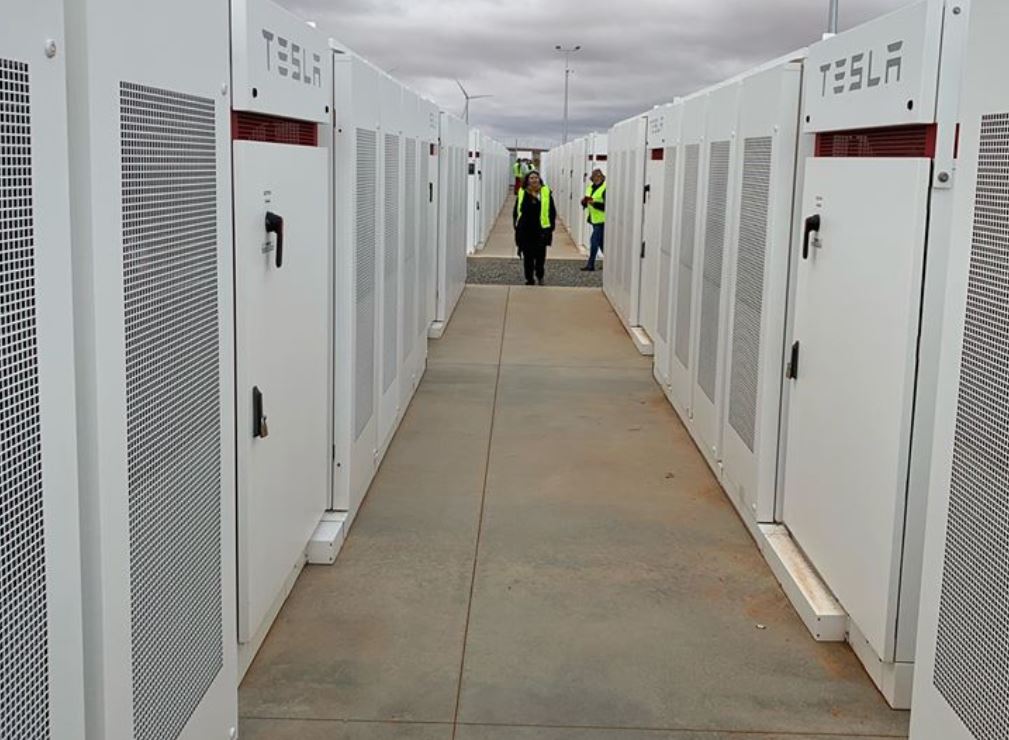Tesla’s “big battery” utility-scale Powerpack system at the Hornsdale Power Reserve in South Australia has yielded more than doubled the savings to consumers in 2019 than the year prior as it dominates fossil fuel generators on quicker demand response for the grid.
Hornsdale Power Reserve saved consumers AUD116 million ($75.78 million) in 2019, a big jump from AUD40 million ($26.14 million) savings in 2018.
The Hornsdale Power Reserve, owned and operated by French renewable energy producer Neoen, is home to the largest lithium-ion battery energy storage system in the world with a 100 MW/129 MWh. Tesla Powerpack has been playing a significant role in grid stability since its installation in 2017, a function previously dominated by fossil fuel generators that bring energy prices high during system faults of planned maintenance.
“Hornsdale has just been the best asset for the state, and for us as well, it’s a real success story,” head of development at Neoen Australia Garth Heron said in an interview with RenewEconomy. We have shown that these kinds of systems can work. It saves consumers a lot of money, and it’s something we should be rolling out right across the market.”

The system that covers approximately one hectare of land at the Hornsdale Wind Farm provides grid stability to consumers, storing excess energy during off-peak periods and supplying the grid when renewable outputs are low. When a power plant goes down or when there is greater demand for energy, it is practically a race to meet that demand. Tesla battery-powered HPR beats power providers dependent on fossil fuel and gives consumers a win-win scenario. Consumers benefit from the lower prices of HPR and blackouts that can disrupt businesses or daily household activities are avoided. As South Australia shifts to renewable energy, fossil fuel power generators that did not have potent competition before in the market are now forced to bring their prices down back from the orbit.
A report by Australian consulting firm Aurecon analyzed the impact of the Tesla big battery at Hornsdale Power Reserve in its role in the Frequency Control and Ancillary Services (FCAS) markets. These are basically events that require quick reactions when there are sudden changes in demand or supply.
For example, when the Australian Energy Market Operator called for 35MW of FCAS in January, the Tesla big battery was quick to respond and kept prices reasonable. The prices were as low as AUD270 ($176)/MW instead of hitting AUD11,500($7,511)/MW to AUD14,000($9,143)/MW if supplied by the fossil fuel-dependent generators. When South Australia was “islanded” because of a major outage in Victoria, the HPR was able to save consumers AUD14 million in five hours.
According to Aurecon, the biggest savings came from the raised FCAS and amounted to more than AUD50 million ($32.65 million).
The Hornsdale Power Reserve also has a significant impact on FCAS market regulation. Tesla battery use has pushed the average prices from AUD450 ($294)/MWh two years before the installation of HPR to just over AUD20 ($13)/MWH. With lower prices, battery-generated power practically brought fossil fuel power plants, that ruled the region like cartels, to their knees.
Tesla battery has demonstrated how lithium-ion battery power reserves can play a big role in the security of the overall grid. While fuel fossil-powered generators will take several minutes to feed power to the grid in need, the HPR’s fast-discharge capability beat these options and give consumers access to more affordable energy. This also bodes well for owner and operator Neoen to make most of the potential returns, and of course, for Tesla’s energy business.
Tesla’s big battery has proven that battery storage is a practical option on a grid-scale. And it’s very profitable. The state government only injected AUD4 million ($2.61 million) into the multi-million project.
During the final quarter of 2019, the revenue of the Hornsdale Power Reserve jumped by 56%.
The HPR also announced plans to expand its capacity by 50%, boosting it by 50MW/64.5MWh. The project is expected to be completed in the first half of 2020 and will provide stabilizing inertia services critical to the shift to renewable energy in the region, and help push Australia closer to its goal of being net 100% renewable by 2030.
With the numbers clearly showing the benefits of Tesla’s big battery, it is not just a big banana as Australian prime minister Scott Morrison once said.

<!–
–>
